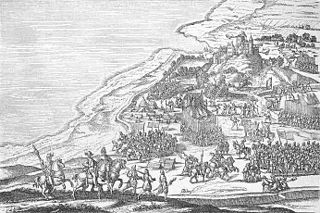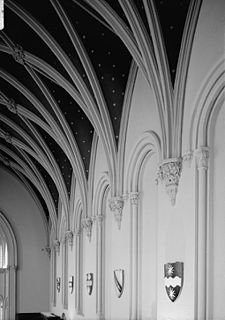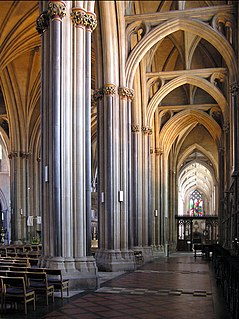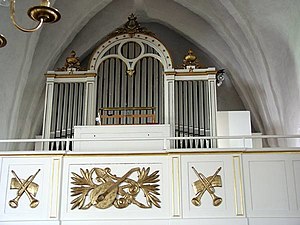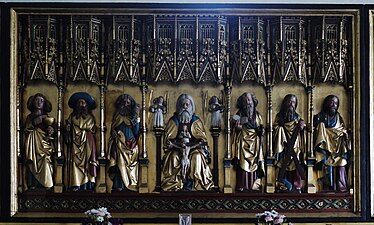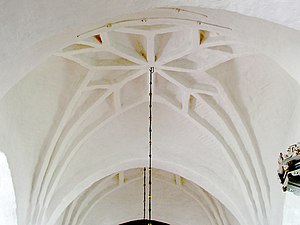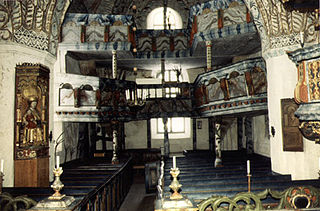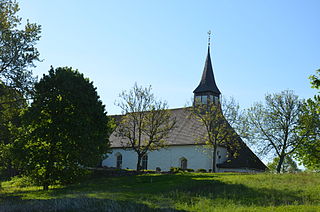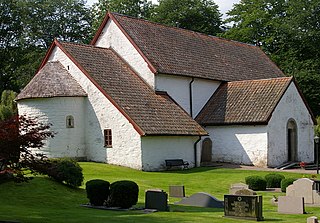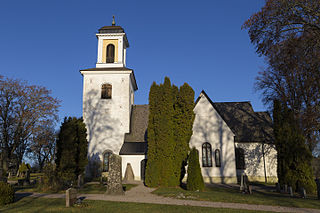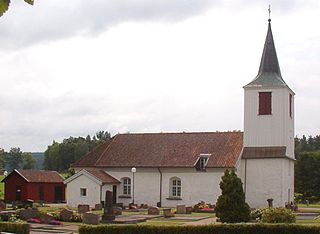

Drothem Church (Swedish : Drothems kyrka) is a medieval Lutheran church in Söderköping, Sweden. The church dates back to the end of the 13th or the 14th century and is one of two surviving medieval churches in Söderköping, the other being St. Lawrence's Church (Sankt Laurentii kyrka). Both churches are associated with the Diocese of Linköping of the Church of Sweden. [1] [2]
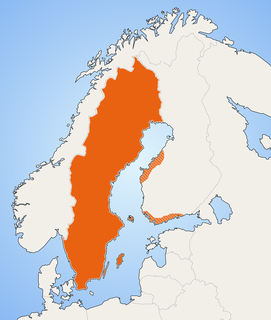
Swedish is a North Germanic language spoken natively by 10 million people, predominantly in Sweden, and in parts of Finland, where it has equal legal standing with Finnish. It is largely mutually intelligible with Norwegian and to some extent with Danish, although the degree of mutual intelligibility is largely dependent on the dialect and accent of the speaker. Both Norwegian and Danish are generally easier for Swedish speakers to read than to listen to because of difference in accent and tone when speaking. Swedish is a descendant of Old Norse, the common language of the Germanic peoples living in Scandinavia during the Viking Era. It has the most speakers of the North Germanic languages.

Söderköping is a locality and the seat of Söderköping Municipality, Östergötland County, Sweden with 6,992 inhabitants in 2010. Söderköping is, despite its small population, for historical reasons normally still referred to as a city. Statistics Sweden, however, only counts localities with more than 10,000 inhabitants as cities. Söderköping is about 15 km southeast of the city of Norrköping, the capital of Östergötland County.

Sweden, officially the Kingdom of Sweden, is a Scandinavian Nordic country in Northern Europe. It borders Norway to the west and north and Finland to the east, and is connected to Denmark in the southwest by a bridge-tunnel across the Öresund, a strait at the Swedish-Danish border. At 450,295 square kilometres (173,860 sq mi), Sweden is the largest country in Northern Europe, the third-largest country in the European Union and the fifth largest country in Europe by area. Sweden has a total population of 10.2 million of which 2.4 million has a foreign background. It has a low population density of 22 inhabitants per square kilometre (57/sq mi). The highest concentration is in the southern half of the country.

